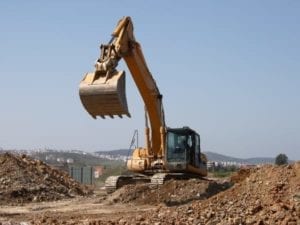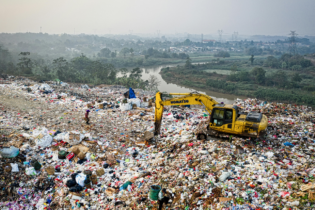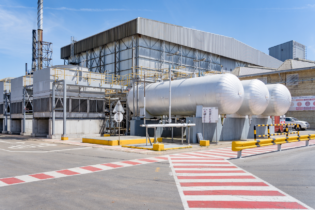With increasing numbers of clients looking for zero to waste landfill alternatives, EnviroServ Waste Management has developed a bio-remediation ‘soil hospital’ technology.
EnviroServ HazTech Manager, Pieter Joubert and Aloes Landfill Manager, Sue Alcock have successfully completed a pilot bio-remediation project at the Aloes Waste Management Facility (WMF) in Port Elizabeth, finding an alternative solution to the landfill disposal of contaminated soil. Alcock explains that soil bio-remediation is “the treatment of pollutants in soil (caused by an oil spill, contaminated groundwater, or an industrial process) using microorganisms, such as bacteria, that break down the undesirable substances”. Due to many hydrocarbon spillages occurring on public roads, far from disposal facilities, and with the objective of doing in-situ bio-remediation, Joubert needed to find a product that could be used for the bio-remediation of contaminated soil and also be cost effective for EnviroServ’s client base. The bio-remediation of hydrocarbon contaminated soils uses a proprietary formula designed specifically for EnviroServ. “It started with a bio-remediation project that EnviroServ carried out in Beaufort-West, where the soil had to remain at the farm. The bio-remediation agents are comprised of microorganisms as well as a potent mix of nutrients which the microorganisms feed on during the process of breaking down the hydrocarbons in the soil. This special formula has therefore been successfully tried and tested in the field,” Joubert said. From a landfill perspective, it should be noted that the presence of significant concentrations of certain hydrocarbons in hazardous waste streams prohibits them from disposal to landfill when they exceed the published threshold limits.Treatment is then mandatory prior to disposal.
This is a requirement of the Waste Regulations and its associated Norms and Standards that have been passed in terms of the Waste Act. Joubert and Alcock also reasoned that a suitable treatment methodology could be applicable where landfilling of contaminated materials was still the customer’s preferred method of disposal but where the concentration of some hydrocarbons prohibited such disposal. If these could be reduced via bio-remediation then the treated soil could be used as cover material for the landfill, saving on natural resources, as a reduced volume of soil would be required to be brought in from outside as a cover material. EnviroServ’s Eastern Cape HazTech team has successfully used the technology to the bio-remediate fuel contaminated soil as a result of spillages caused by vehicle accidents Due to the pilot projects success, a ‘soil hospital’ has been launched at the Aloes Waste Management Facility for the bioremediation of hydrocarbon contaminated soils.







